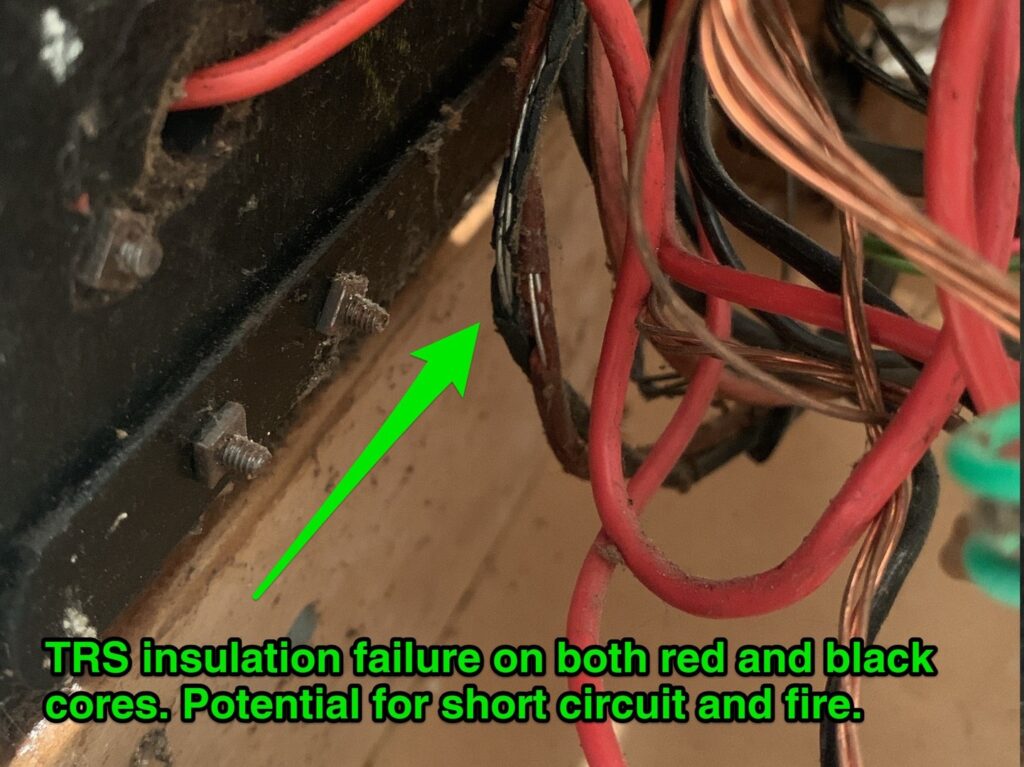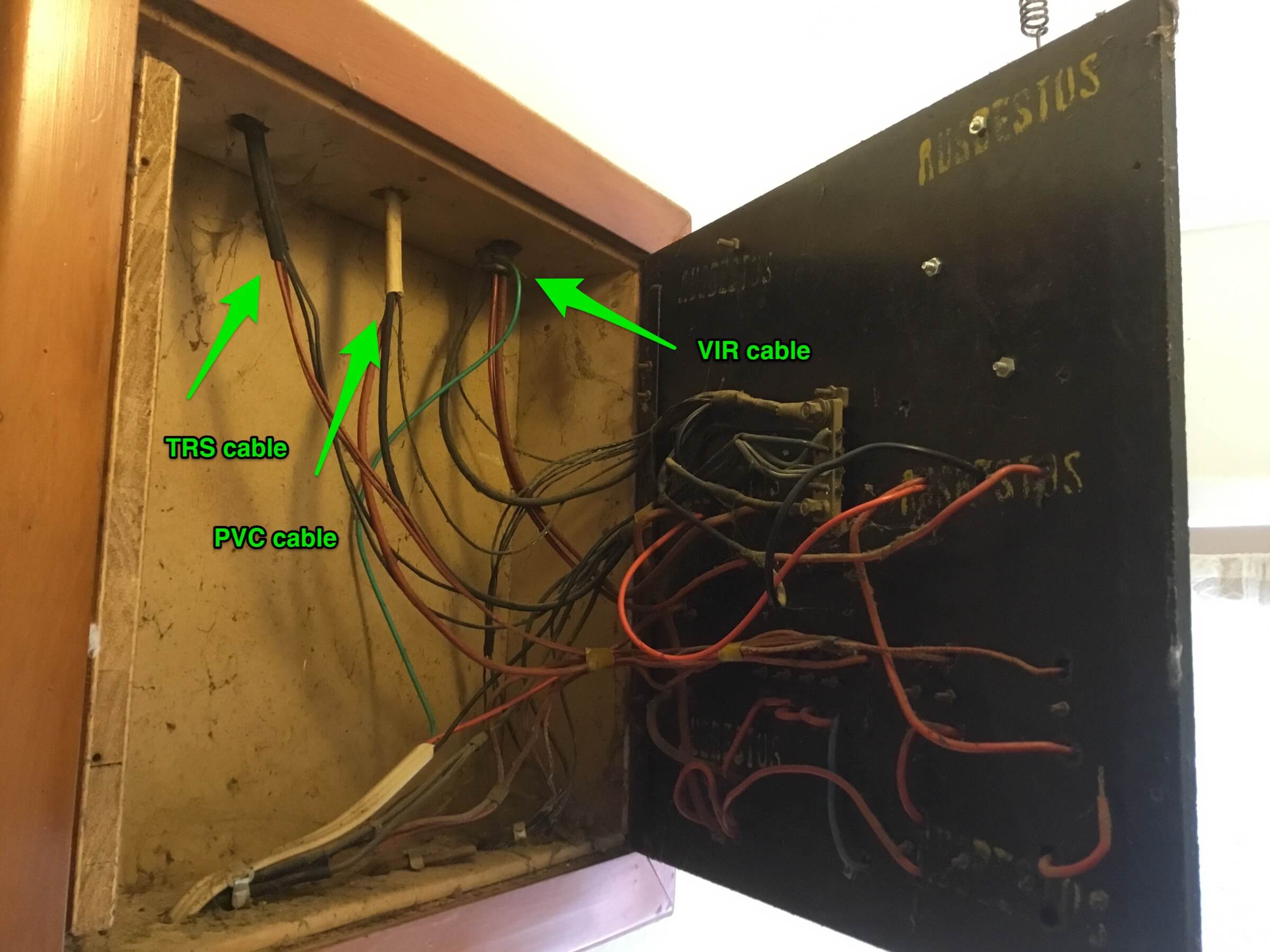Auckland has a rich history of beautiful older villas and bungalow homes. Initially, many of these homes were not equipped with electricity and when it was eventually added, the first types of cables used were Vulcan Indianised Rubber (VIR) or Tough Rubber Sheath (TRS) cabling, which are now well past their useful lifespan. As an Auckland electrician, we understand the risks associated with these outdated wiring systems and can help to ensure with best practice rewiring that your home is safe and up-to-date.
In this article, we’ll take a brief look at the history of electrical appliances introduced in Auckland and explain the importance of rewiring your home to ensure the safety of you and your family.
This is a rough timeline of electrical appliances first introduced in Auckland which shows the steady introduction of electrical lighting and appliances into homes:
-
- Late 1800s: The first electrical appliances in New Zealand were likely electric lights, which began to be installed in homes and businesses in the late 1800s.
-
- Early 1900s: The first electric irons and toasters were introduced in New Zealand, allowing people to enjoy the convenience of using electricity for household tasks.
-
- 1920s: Vacuum cleaners became more widely available, making cleaning easier and more efficient.
-
- 1930s: Refrigerators and washing machines became more affordable and widely used in New Zealand homes, improving the quality of life for many families.
-
- 1940s: Radios became popular, allowing people to listen to music and keep up with current events.
-
- 1950s: Television sets began to be introduced into New Zealand homes, providing a new source of entertainment and information.
-
- 1960s: Stereos and home entertainment systems became popular, allowing people to enjoy music and movies in the comfort of their own homes.
As the use of electricity became more widespread in homes, the early electrical cabling faced a significant strain. The use of outdated wiring methods such as Vulcan Indianised Rubber (VIR) or Tough Rubber Sheath (TRS) cabling is now deemed unsuitable due to their age and known physical limitations.
These types of cabling have deteriorated over time and have become a potential fire and electrical shock hazard – a prime target for rewiring.
Vulcan Indianised Rubber cable (VIR) – Used up until the late 1940’s
-
- VIR electrical cables were some of the first electrical cables used and were made using copper wires that were coated in rubber sheathing, then wrapped in fabric, and run in 12 mm steel conduit or timber ducting which provided physical protection for the cables and in the case of steel conduit, it was also used for the electrical earthing.
-
- This type of electrical wiring was initially very robust and provided good safe wiring. However, the rubber was found to perish over time and was particularly affected by oxygen and ozone in the atmosphere, or by sulphur. This caused the rubber to dry out and became brittle and flake off exposing bare copper and that created a potential fire and electrical hazard.
-
- The cable usually fails at the connection points of lights and switchgear.
-
- This type of wiring can be recognised by a quick look in your attic. Black steel conduit in your attic is easily identified while a closer look may be needed to identify the wooden ducting. These types of wiring methods should be rewired as they are no longer legal and are a known fire hazard.
Tough Rubber Sheath (TRS) – Used from 1940’s through to the end of the 1950’s.
-
- Widespread use after the Second World War. TRS cabling can be easily identified with the soft, black coloured exterior insulation covering individually insulated electrical copper cores.
-
- Steel conduit or wooden ducting was not used to protect this cable as the exterior black insulation was deemed to protect the inner insulated electrical cores.
-
- Unfortunately TRS cable insulation was identified to quickly deteriorate and fail. It was soon replaced by PVC sheathed cables.

Polyvinyl chloride cable (PVC) – from about 1955 to early 1960’s
-
- had a low softening temperature and so the cabling wasn’t suited to handling much power.
-
- Susceptible to deterioration commonly seen as a sticky green liquid, this can be seen coming out of the ends of older PVC-insulated and sheathed cables. This cable has a bare earth conductor.
Tough Plastic Sheath (TPS) – Used from early 1960’s to present.
-
- After a few formula changes this white coloured exterior sheathed cable became the industry standard cable used today.
-
- It is important to note that some lighting circuits were initially wired using a two core cable lacking a green earth core needed to bond the metal frame of the light. Rewiring these lighting circuits must comply with the NZ standard.
In conclusion, this overview of the evolution of electrical cabling in New Zealand underscores the significance of upgrading and rewiring outdated cabling systems in older homes. It is imperative to ensure that your home’s electrical system is safe and efficient, and replacing old VIR or TRS cabling can help mitigate potential fire and electrical hazards. By keeping your electrical system up to date, you can enjoy a safer and more reliable power supply.
Call our friendly team at Northern Lights lighting and electrical, your local Master electrician in Auckland today to have a free to obligation quote to rewire you home today.



